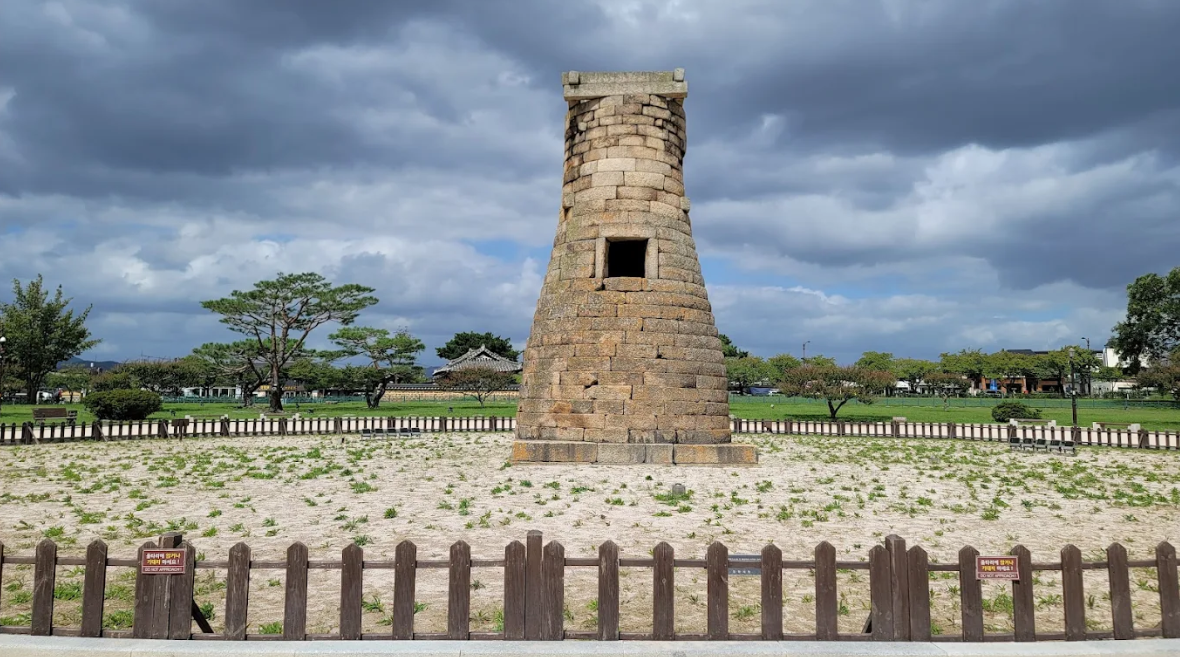Cheomseongdae is one of Korea’s most important historical landmarks and a must-see attraction in Gyeongju. This is an ancient stone tower that served as an astronomical observatory during the Silla Kingdom period.
Located in Gyeongju, South Korea, this bottle-shaped stone structure is considered one of the world’s oldest surviving astronomical observatories. The name “Cheomseongdae” means “star-gazing tower” in Korean.
When Was Cheomseongdae Built?
Cheomseongdae was built between 632-647 AD during the reign of Queen Seondeok of Silla. This makes it approximately 1,400 years old, constructed during Korea’s Three Kingdoms period when the Silla Kingdom was at its peak.
Cheomseongdae is the oldest existing astronomical observatory in Korea. It’s also recognized as one of the oldest astronomical observatories in the world that’s still standing today.
Cheomseongdae Observatory Entrance Fee
Good news: Cheomseongdae is FREE to visit!
There is no entrance fee to see Cheomseongdae Observatory itself. However, if you want to visit the nearby Gyeongju National Museum or other historical sites in the area, those may have separate admission fees.
While Cheomseongdae is among the oldest surviving observatories globally, it’s not definitively the oldest. Other ancient observatories include:
- Stonehenge in England (much older but different purpose)
- Various ancient Egyptian and Mesopotamian structures
- Ancient Chinese observatories
However, Cheomseongdae is unique as one of the best-preserved ancient observatories specifically designed for astronomical observations that remains intact today.
Here you can explore Namsangol Hanok Village, Changgyeonggung Palace & here you can visit to see the 10 famous temples of Seoul that are very close to you.
Cheomseongdae Observatory Opening Hours
Cheomseongdae is accessible 24 hours a day, 7 days a week since it’s an outdoor historical monument. However, for the best experience:
Recommended visiting times:
- Morning: 9 AM – 11 AM (good lighting, fewer crowds)
- Late afternoon: 4 PM – 6 PM (beautiful golden hour photos)
- Evening: After sunset for a peaceful atmosphere
Note: The surrounding area is well-lit at night, making evening visits safe and atmospheric.
Cheomseongdae Observatory and UNESCO
Cheomseongdae is not individually listed as a UNESCO World Heritage Site. However, it’s located within the Gyeongju Historic Areas, which were designated as a UNESCO World Heritage Site in 2000. The UNESCO listing includes:
- Historic areas of Gyeongju city
- Multiple Silla Kingdom archaeological sites
- Ancient temples, tombs, and monuments
- Cheomseongdae as part of the broader historical landscape
Cheomseongdae Observatory History
Silla Kingdom Period (632-647 AD):
- Built during Queen Seondeok’s reign
- Part of Silla’s advanced scientific and cultural achievements
- Used by royal astronomers and scientists
- Demonstrated the kingdom’s sophisticated understanding of astronomy
Historical significance:
- Shows Korea’s early scientific advancement
- Reflects the importance of astronomy in ancient Korean society
- Survived numerous wars and natural disasters
- Remained functional for centuries after construction
Modern recognition:
- Designated as National Treasure No. 31 of South Korea
- Symbol of Korean scientific heritage
- Popular tourist destination and cultural landmark
Cheomseongdae Observatory Tours
Self-guided visits:
- No formal tours required – it’s easy to explore independently
- Information boards available in Korean and English
- Takes about 15-30 minutes to see and photograph
Guided tour options:
- Gyeongju city tours often include Cheomseongdae
- Private tour guides available through local tourism offices
- Audio guides can be rented from nearby Gyeongju National Museum
Combined tours: Most visitors combine Cheomseongdae with other nearby attractions:
- Daereungwon Tomb Complex (5-minute walk)
- Gyeongju National Museum (10-minute walk)
- Anapji Pond (15-minute walk)
Fascinating Cheomseongdae Observatory Facts
1. Mathematical precision: Contains exactly 362 stones, representing days in the lunar calendar
2. Architectural symbolism:
- 12 rectangular stones at base represent months
- 27 levels of stones represent Queen Seondeok as the 27th ruler
3. Earthquake survivor: Has withstood over 1,400 years of earthquakes and natural disasters
4. Gender significance: Built by Korea’s first female ruler, Queen Seondeok
5. Scientific accuracy: Its design reflects advanced understanding of astronomy and mathematics
6. Cultural impact: Featured on Korean currency and stamps
7. Construction mystery: Built without mortar, using interlocking stone techniques
Visiting Information
Location: 839-1 Inwang-dong, Gyeongju-si, Gyeongsangbuk-do, South Korea
Getting there:
- From Seoul: KTX train to Singyeongju Station, then bus or taxi
- Local transport: City bus or taxi from Gyeongju city center
- Walking: 10-15 minutes from central Gyeongju
What to bring:
- Camera for photos
- Comfortable walking shoes
- Sunscreen (limited shade around the monument)
Best combined with:
- Gyeongju National Museum
- Royal tombs at Daereungwon
- Anapji Pond
- Bulguksa Temple (further away but worth the trip)
Cheomseongdae Observatory offers visitors a unique opportunity to connect with Korea’s ancient scientific achievements. This remarkable structure demonstrates that Korean civilization was conducting sophisticated astronomical observations over 1,400 years ago, making it an essential stop for anyone interested in history, science, or Korean culture.

